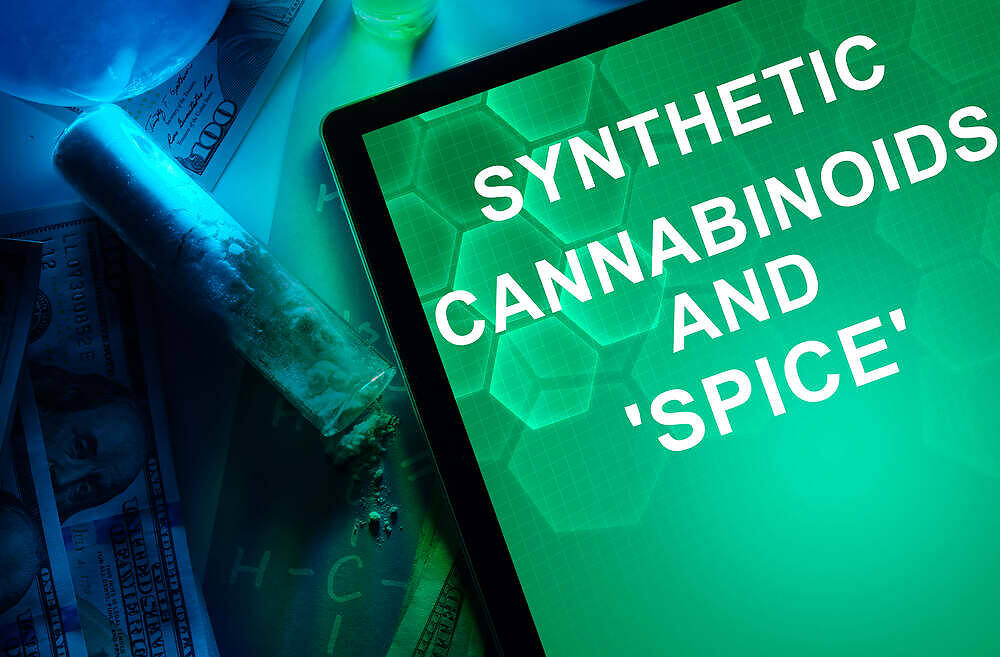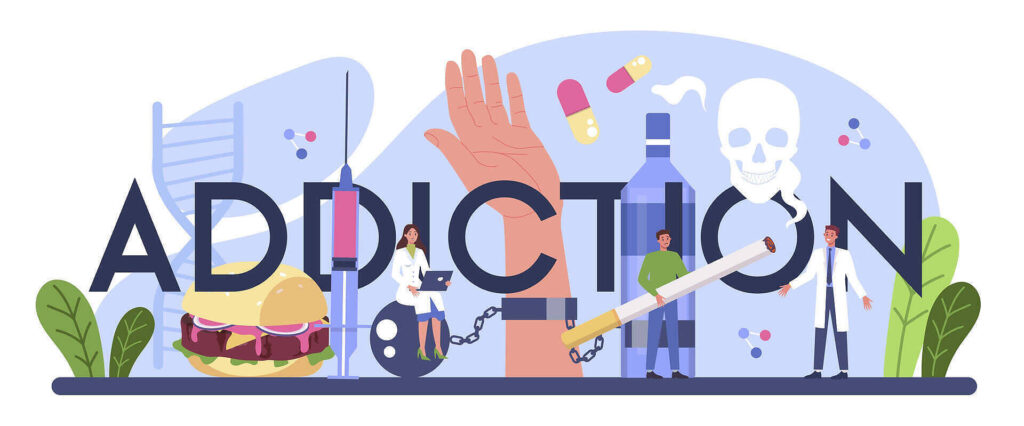Spice Addiction – What You Need To Know
The idea of synthetic marijuana was popular, serving as a method for people to use cannabis without facing any legal repercussions. The tricky thing was that synthetic marijuana, known under several different names, wasn’t the same natural substance people expected.
You might know the substance spice, K2, potpourri, or one of the other street names that it has.
Spice is addictive and harmful. We will talk about spice addiction today, giving you a clear look at what it is, why it’s dangerous, and how to find help.
Let’s get started.

Effects of Spice Abuse
Spice effects can vary because of the broad nature of its contents. Two synthetic cannabinoids might be about as far from one another as two substances can get.
One gets the individual high, producing a lot of exciting thought patterns and unique effects on mood, heart rate, and perception. The other sinks into the body and improves the immune system, possibly reducing pain and anxiety.
A third cannabinoid might drive you crazy, produce aggression, and change your state of mind altogether.
The other natural cannabinoids we know about also have their unique properties. Think of cannabinoids as a big bag of jelly beans. Some of those jelly beans might taste like boogers, while others could be the tastiest blueberry flavour you’ve ever had.
Instead of different flavours, imagine that those jelly beans all produced a different physiological, psychological, or psychoactive effect. Some might get you a bit high, others make you paranoid, while others might combat your lung cancer.
It’s an entire Russian roulette-type situation. The intelligent thing to do is only to eat the jelly beans you understand that have been researched and that other people have had overwhelmingly positive experiences with.
The Jelly Bean Example Continued
The example of jelly beans about cannabinoid effects is a beneficial one. Keep in mind the idea of random flavours (effects).
Let’s say that there’s been a longstanding jelly bean manufacturer. We’ll say this manufacturer is a lot like natural cannabis. Some people enjoy these tried and true jelly beans; others don’t like them so much, and the government tends to think they should be illegal.
Nobody gets physically addicted to these jelly beans, even though many individuals have a chronic or psychological addiction. Nobody ever dies from their use, and, like them or not, they don’t immediately threaten one’s physical health.
Even though they’re illegal, people still like to use them.
A new jellybean manufacturer comes around with its line of flavours and effects. These jelly beans could kill you, cause muscle damage, produce kidney failure, or even give you a heart attack.
The company doesn’t say this, but it’s true. Their brilliant legal time found a way to make jelly beans that weren’t entirely illegal, though. They can still market them like jelly beans, and the general public jumps at buying them.
This is almost exactly the situation with spice and cannabis.
Spice Addiction
UK spice addiction has been rampant for several years. It’s popular among the homeless population. The spice drug price is often low if you get it from unreputable vendors or dealers, making spice abuse very common among those who don’t have a lot of disposable income.
Unfortunately, the price of spice drugs often coincides with their quality. Those who get cheap spice are more prone to harmful chemicals, which are often more addictive and produce more robust spice withdrawal.
What is it that makes spice so addictive? Let’s take a look.
Understanding Addictive Properties
To understand why spice is so addictive, we need to take a brief look at what makes things addictive at all. You could point to one or two essential ingredients for most drugs that produce addiction, but the spice drug is slightly different.
Generally speaking, physical addiction deals with a drug’s interaction with the body’s reward centre. That almost always means that there’s a relationship between a dopamine surge and the drug in question.
If we break down rewards and chemical responses in the brain, dopamine plays a massive role in almost everything. The same goes for the brains of mice, working through the animal kingdom into humans.
We share that quality with most animals because the dopamine response is ancient. It’s rooted at some point in time immemorable before primates split apart from rodents, felines, birds, and other families of the animal kingdom.
Dopamine produces a positive feeling when we complete tasks concerning our survival or success. When you go for a run, congratulations, here’s some dopamine.
The same is true when you eat food, get promoted at work, experience the birth of a child, or fall in love. All of those experiences are healthy and contribute to your genetic line’s success in one way or another.
We seek the repetition of that experience because it’s instinctual for us to do so.
Addictive Drugs
When drugs get added to the mix, we face a much different and challenging situation.
Drugs hack our biology by manipulating the way that our brain chemistry operates. We infuse hormones and neurochemicals by blocking specific pathways or stimulating others.
Our ability to make products that hack our biology is essential to modern medicine. On the other hand, those drugs put the individual under challenging predicaments. To complicate things, some drugs exist in nature and pose the same challenges.
Addictive drugs typically produce a rush of dopamine that equals the rush of the most incredible natural experiences we can have in life. Say, for example, that you achieved your life’s ambition of winning an Oscar.
You receive the award, and your internal system releases an elegant flood of positive neurochemicals that allow you to feel delighted, confident, and fulfilled. It’s beautiful, and you’ve earned the right to feel that way.
While you might want to recreate that experience, it isn’t as if you’ll have withdrawals the next day.
Couple that image with the experience of taking heroin, for example. You receive an almost identical amount of dopamine, except you don’t need to do any requisite work.
It’s an incredible shortcut to something that our biology screams out for. When you’re in a position to get more and more of that substance, you’re almost powerless to get it.
How Addiction Interacts With Spice
Spice is an exciting substance when it comes to addiction. There isn’t one chemical property that contributes to physical addiction.
Further, there isn’t regularity in the properties within different batches of spice. All there is to know is that there are several synthetic cannabinoids in whatever product you receive.
That equation makes understanding spice addiction very difficult. Different cannabinoids could interact with dopamine receptors in various ways, leading to significant rushes of powerful, addictive experiences.
Those experiences might involve falling asleep or going out of your mind for a few hours. Further, spice often leads a person to exit their normal state of mind and go to a place without pain or sensation.
Of course, that experience fades and leads to the symptoms described above. The temporary release experience is addictive, too, and can lead a person to go to great lengths to recreate it.
On top of psychological addiction, the experience of withdrawal makes it a lot harder to stop using the substance.
The ECS and Synthetic Cannabinoids
Specifically, those effects occur because cannabinoids have a particular effect on the human endocannabinoid system. The human body produces endocannabinoids, with “endo” meaning internally produced.
So, endocannabinoids and the cannabinoids found in marijuana aren’t too distinct from one another. That makes it very easy for the endocannabinoid system to process those chemicals and put them to use in various ways.
The endocannabinoid system (ECS) is an assistive system that aims to keep different bodily functions in equilibrium. The immune system, the digestive system, the nervous system, and even brain areas are regulated by the ECS in some way.
To understand the full impact of spice and spice addiction, we must have a good idea of the endocannabinoid system. Let’s explore how cannabinoids interact with the ECS before digging into the particulars of spice.
The ECS exists as a series of receptors that work their way throughout the body.
It’s hard to underestimate the value of this system. Everything from learning to memory, temperature control, inflammation, and hunger are intimately tied to this system.
These receptors are woven throughout the body, watching the neurochemical levels in different systems. There are two primary iterations of endocannabinoid receptors, though.
The primary receptors known to researchers are the CB1 and CB2 receptors. CB1 receptors. CB1 receptors are heavily present in the brain.
CB1 receptors outnumber any particular type of receptor in the brain because they survey the brain’s respective systems. It needs to have more significant numbers to account for everything it does.
CB2 receptors exist outside the brain, finding their place in various body parts. Namely, they’re present in the immune tissue more than any other tissue.
The Role of CB1 and CB2 in Cannabinoid Use
The dominant cannabinoids in cannabis are CBD and THC. That said, there are more than one hundred other cannabinoids that could be present in the plant at any given time. We know of more than 115, but there could be more than 200 cannabinoids that grow naturally in cannabis.
Spice holds a lot of other chemicals that operate on the same system.
THC is the substance that produces the “high” or psychoactive effect in cannabis. This occurs for two reasons. For one, the chemical structure of THC is such that it affects the frontal lobe and the amygdala in different ways.
Not every chemical substance that impacts the frontal lobe produces a high. If that were the case, humans would always be in an altered state. The nature of THC and any other psychoactive drug has a chemical change that makes those states of consciousness.
Second, THC binds to CB1 receptors. That means it binds with receptors and moves into the brain rather than the body. So, the majority of THC that a person ingests impacts their brain.
CBD, on the other hand, moves into the body and not the brain. That’s part of the reason why there’s no psychoactive effect from CBD use. Instead, we see pain relief, anxiety reduction, and appetite management.
Spice Withdrawal Length
Withdrawal is the symptom that occurs when an individual stops using a drug they’re addicted to. In most cases, those symptoms are physical.
The person might get the shakes, get nauseous, have vertigo, vomit, and more. You might also get headaches and anxiety and experience symptoms of depression.
You don’t get withdrawal symptoms unless you’ve used the substance for some time. Your body gets used to the presence of a drug and adjusts its systems to accommodate that drug’s presence.
When the substance is removed, the body craves the substance to maintain a state of equilibrium. Even though the substance might be the worst thing for you, you experience a deep craving with the symptoms described above.
Once you’ve reached that point, the withdrawal symptoms should occur within the first 24 hours you’re absent from Spice. For individuals who have used spice for an extended period, the symptoms could peak after around 4 to 7 days.
Beyond that, the severity of withdrawal symptoms will decline over a few weeks.
Signs of Spice Use
The signs of spice use are categorized by a change in personality, increased irritability, periods of grogginess, or distinct psychotic episodes. The individual might start to avoid their everyday responsibilities and become more withdrawn.
Addiction tends to replace a person’s primary responsibilities and goals. The same goes for relationships and passions. When someone stops participating in the things they once enjoyed, that’s an indication that there’s something wrong.
That doesn’t always mean substance abuse, but it’s a possibility. These signs develop gradually, culminating in an individual who doesn’t behave like they used to, avoiding all responsibility and normality in favour of the drug.
Lying and withdrawal from social life are signs that occur when the addiction has gotten to a severe point. The trouble of identifying spice use is that symptoms are often very different.
The effect depends on the particular product that the person has and the synthetic cannabinoids therein. Maybe a new drug spice variation causes unique symptoms, driving you or a loved one to behave in distinct ways.
In that case, the spice drug side effects would be difficult to identify from the outside.
Getting Help for Spice Addiction
Regardless of your reasons for doing spice or how far into the abuse cycle you are, there are resources to get help.
Note that all spices differ, and your next batch could contain harmful chemicals. Many people have sustained mental and physical damage from using spice, and there’s no telling when the next synthetic cannabinoid will be the wrong one.
Addiction treatment is effective and available for whatever drug you’re using. Substance abuse resources give you a wide variety of options for treatment, tailoring their approach to your needs and your particular situation.
It’s difficult to stop using a substance when you’re alone. Nobody prevents you from seeking more spice, so you must battle withdrawals and cravings. People are often driven to relapse when they don’t have a support system.
Treatment centres give you a solid support system and the resources you need to combat cravings. Further, they offer mental health and counselling services that address the source reasons for your addiction.
Addiction typically exists in the context of numerous factors in a person’s life. People usually don’t want to get addicted to drugs but do so to escape or manage challenging life circumstances. Counselling is an excellent way to uncover those factors and work through them.
When you do that, you set yourself up for success the next time you have a difficult craving.



